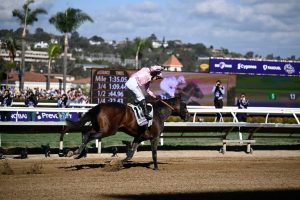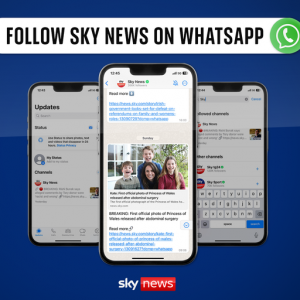What could decide this massive Game 6 between the Grizzlies and Wolves
The NBA first-round playoff series between the Memphis Grizzlies and Minnesota Timberwolves has the makings of an all-time classic.
We’ve seen young superstars Ja Morant and Anthony Edwards take their games to new heights — literally, in Morant’s case — Karl-Anthony Towns letting it fly from deep and some massive rallies that have swung the series momentum through five exhilarating games.
What’s in store for Friday’s Game 6 (9 p.m. ET, ESPN) in Minneapolis?
Will the Grizzlies continue to experiment with different defensive matchups against Towns? Will Jaren Jackson Jr. be able to stay out of foul trouble? What theatrics could Edwards provide in the latest chapter of his impressive playoff debut? What courtside trash talk will be traded between Tee Morant and Karl Towns Sr.?
Our NBA experts are breaking down the storylines they’re watching the closest as the Grizzlies look to close out the Timberwolves and advance to the Western Conference semifinals.
MORE: NBA playoff matchups, schedules and news
Can KAT lead a Minnesota series comeback?
No factor in Grizzlies-Wolves has been more important than Karl-Anthony Towns’ production. In Minnesota’s pair of wins, Towns has averaged 31 points and 17.5 shot attempts. In three losses, that drops to 17 PPG and almost precisely half as many attempts (8.7).
Certainly, the Memphis defense hasn’t been the only factor at play here. Towns’ own foul trouble (five in each of the Wolves’ losses, limiting him to no more than 35 minutes as compared to the 42-plus he’s played in two wins) has been key. Same goes for Minnesota’s guards, particularly D’Angelo Russell, failing to find Towns in favorable situations.
Still, the Grizzlies’ adjustment during their fourth-quarter comeback in Game 5 was fascinating. After Jackson fouled out and sent Towns to the line for three shots with 6:58 left to play, putting the Timberwolves up 11, Memphis coach Taylor Jenkins decided to go small. He put four perimeter players on the court around Brandon Clarke and gave 6-foot-7 wing Dillon Brooks the assignment of defending the 6-foot-11 Towns, who had already scored 25 points.
In 11 half-court matchups against Brooks, Towns attempted just two shots according to Second Spectrum tracking, making one (a 3-pointer). The Grizzlies outscored Minnesota 23-10 over the final seven minutes, rallying to win and take a 3-2 lead in the series.
Although Brooks did yeoman’s work using leverage to keep Towns from establishing post position, there’s more the Timberwolves can do to take advantage of the size mismatch. What little success they did have came by playing through Towns at the elbow. A sharp cut by Russell next to Towns — effectively making Towns a screener — put Memphis in rotation because Brooks didn’t want to switch. The resulting ball movement set up Towns to knock down an open 3.
The Grizzlies foiled a similar play the next time down, with Desmond Bane poking the ball away from Towns for a turnover, but a handoff between Towns and Jordan McLaughlin set up the Edwards corner 3 that tied the game just before Morant’s game-winning layup.
We’ll see Friday night whether putting Brooks on Towns was simply a desperation move for Jenkins or a strategy he’ll go to again. If so, expect Minnesota’s offense to be better prepared.
— Kevin Pelton
Can Jaren Jackson Jr. stay on the court?
To achieve playoff success, teams generally need their top talent to perform — because talent wins big series. While Morant’s electric offense paces the Grizzlies, Jackson Jr. is building the résumé to be one of those strong number 2s. Memphis believes it because they signed their big man to a four-year extension worth $105 million last October.
Yet right now, he’s one of the postseason’s most prominent underachievers.
An All-Defensive Team candidate, Jackson has provided solid help defense, and the Grizzlies are giving up a stingy 101.6 points per possession when he’s on the floor. Fourteen blocks isn’t nothing. Problem is, he can’t stay on the floor: In the five games against Minnesota, he’s averaging 22.6 minutes per game, a result of his constant foul trouble.
That might be excusable if he were contributing offensively, but Jackson has been a cipher in the series. He’s racked up 26 personal fouls but only 18 field goals. One of Jackson’s assets as the Grizzlies 4-man is the stretch he provides in the half-court, which is crucial for a team that needs the lane clear for Ja Morant to do his thing.
But Minnesota has gladly shirked accounting for Jackson beyond the arc, and why not? Jackson is shooting only 31.8% from 3, while Morant is attacking the paint with impunity.
Jackson doesn’t excel at some of the other functions of a big man in the half court. He’s not a great screener, roller, nor high-post facilitator. Though he’s a fairly decent threat on the block, Memphis’ offense doesn’t prioritize posting up, not when Morant serves as the catalyst of the offense.
Somehow, someway, the Grizzlies and Jackson have to figure out a way to make him a useful offensive player, because they need more from him than putbacks and the occasional 3-pointer.
He’s undoubtedly a more-than-useful defensive player — he’s the Grizzlies’ linchpin — but not if he’s checking out of the game prematurely with foul trouble.
The Grizzlies need Jackson, both to close out this series and, if they should, against the Golden State Warriors in the second round. It’s incumbent on him to fulfill that need.
— Kevin Arnovitz
Which version of Ant Man will show up?
It’s easy to forget that Anthony Edwards is 20 years old and on the verge of just his sixth career playoff game. His pure scoring ability is mesmerizing, but his inexperience has been on display as much as his talent.
Game 5 was a microcosm of those diametrical views.
On one end, Edward hits a game-tying 3 pointer to knot it up at 109-109 with merely seconds to go. Yet on the other end of the court he overplayed his hand on defense against one of the best and most explosive offensive players in the game. That led to Morant’s game-winning layup that gave the Grizzlies a 3-2 lead in the series.
If you look at the Timberwolves’ two wins, there are obvious distinctions in Edwards’ play. In both Wolves victories, he’s shooting at least 50%, has at least six free throw attempts and a total of five blocks and three steals.
In their losses, he has been less efficient and is letting the Grizzlies defense off the hook by settling for jumpers.
In Minnesota’s wins, Edwards has been the best player on the floor on both ends of the court. For the Wolves to have any shot at stealing Game 6 and the series, they need Ant Man to show us his superpowers.
— Jorge Sedano
Will Desmond Bane continue his sophomore surge?
You’ve heard of a Short King?
Bane is 6-foot-5 and doesn’t come close to qualifying for the trendy term of endearment aimed at men about 5-foot-9 and under.
A short-armed king, though? That’s a category built for Bane.
The Grizzlies second-year guard is one of the rare NBA players with a negative wingspan (a wingspan shorter than your height), with his arms measuring at 6-foot-4.25. In a league that values length, Bane fell to No. 30 in the 2020 draft in part because of that measurement.
Two years removed from that draft day drop, Bane is proving arm length to be overrated while improving at a swift pace.
Bane is somewhat quietly leading the Grizzlies in scoring in this series with 23.6 points per game, which is five more points than he averaged in the regular season (18.2).
His regular season, during which he nearly doubled his scoring average from his rookie season, was impressive enough that Morant tried to redirect his Most Improved Player award to his teammate earlier this week.
Watch Desmond Bane find out that Ja Morant left his Most Improved Player award in Bane’s kitchen.
But Bane’s rise is even more striking when you consider his efficiency this postseason. He’s scoring those extra points with a lower usage rate in the playoffs (21.2%) than he had in the regular season (23.1%).
Bane has been launching 9.4 3-pointers per game this series (2.5 more than the regular season) and hitting at 46.8%. In this series, he joined Stephen Curry and Klay Thompson as the only NBA players in history to hit seven or more 3-pointers in consecutive playoff games.
Bane is a master of creating space with footwork, pump fakes, step-back dribbles — none of which are hampered by his sub-optimal arm length. Bane is certainly not alone: The Miami Heat‘s Tyler Herro is another current playoff contributor who has measured a negative wingspan, while ESPN’s JJ Redick played his 14-year NBA career the same way.
Bane almost has some company on his own team. Brandon Clarke is thriving in his second playoffs (16.4 points and 8.6 rebounds) while sporting a wingspan that exactly matches his 6-foot-8.25 frame.
Bane also used those stocky arms to push Minnesota coach Chris Finch on the sideline, earning him a technical foul. So chances are that Wolves fans will pay him a little extra attention in Game 6.
— Israel Gutierrez



